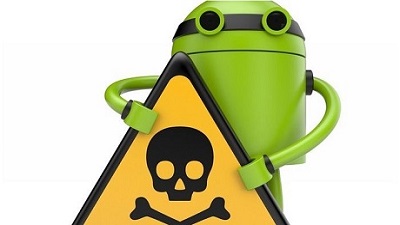A healthy percentage of Android users targeted by mobile malware or mobile adware last year suffered a system partition infection, making the malicious files virtually undeletable. That’s according to research from Kaspersky, which found that 14.8 percent of its users who suffered such attacks were left with undeletable files. These range from trojans that can install and run apps without the user’s knowledge, to less threatening, but nevertheless intrusive, advertising apps. “A system partition infection entails a high level of risk for the users of infected devices, as a security solution cannot access the system directories, meaning it cannot remove the malicious files,” the firm explained, in a posting on Monday. Moreover, the research found that most devices harbor pre-installed default applications that are also undeletable – the number of those affected varies from 1 to 5 percent of users with low-cost devices and reaches 27 percent in extreme cases. “Infection can happen via two paths: The threat gains root access on a device and installs adware in the system partition, or the code for displaying ads gets into the firmware of the device before it even ends up in the hands of the consumer,” according to the firm. In the latter scenario, this could lead to potentially undesired and unplanned consequences. For instance, many smartphones have functions providing remote access to the device. If abused, such a feature could lead to a data compromise of a user’s device. Among the most common types of malware that Kaspersky has found installed in the system partition of Android smartphones are two older threats: The Lezok and Triada trojans. “The latter is notable for its ad code embedded not just anywhere, but directly in libandroid_runtime — a key library used by almost all apps on the device,” according to the analysis. However, examining victims’ system apps revealed a wide range of threats. The Agent trojan for instance is an obfuscated malware that usually hides in the app that handles the graphical interface of the system, or in the Settings utility, without which the smartphone cannot function properly. The malware delivers its payload, which in turn can download and run arbitrary files on the device. Then there’s the Sivu trojan, which is a dropper masquerading as an HTMLViewer app. “The malware consists of two modules and can use root permissions on the device,” according to Kaspersky. “The first module displays ads on top of other windows, and in notifications. The second module is a backdoor allowing remote control of the smartphone. Its capabilities include installing, uninstalling, and running apps, which can be used to covertly install both legitimate and malicious apps, depending on the intruder’s goals.” The Plague adware app is another common threat that Kaspersky found installed in the system partition. It pretends to be a legitimate system service, calling itself Android Services – but in reality, it can download and install apps behind the user’s back, as well as display ads in notifications. “What’s more, Plague.f can display ads in SYSTEM_ALERT_WINDOW — a pop-up window that sits on top of all apps,” explained the researchers. The Necro.d trojan is unusual because it’s a native library located in the system directory. Its launch mechanism is built into another system library, libandroid_servers.so, which handles the operation of Android services. “At the command of the command-and-control (C2), Necro.d can download, install, uninstall and run apps,” explained the researchers. “In addition, the developers decided to leave themselves a backdoor for executing arbitrary shell commands. On top of that, Necro.d can download Kingroot superuser rights utility — seemingly so that the OS security system does not interfere with delivering ‘very important’ content for the user.” Further details can be found on OUR FORUM.
